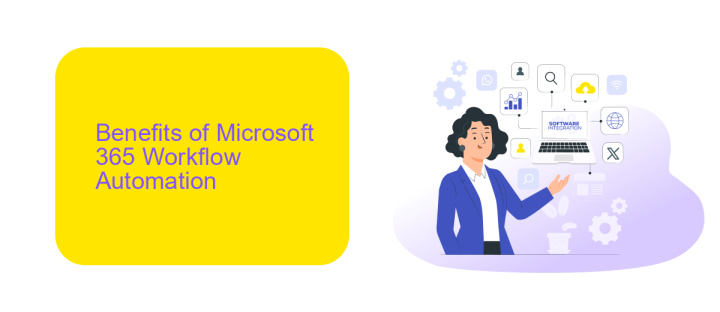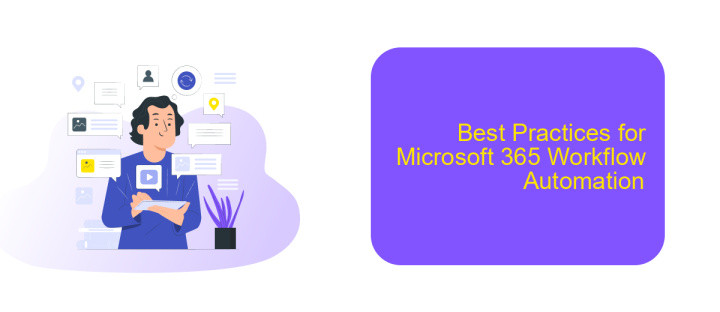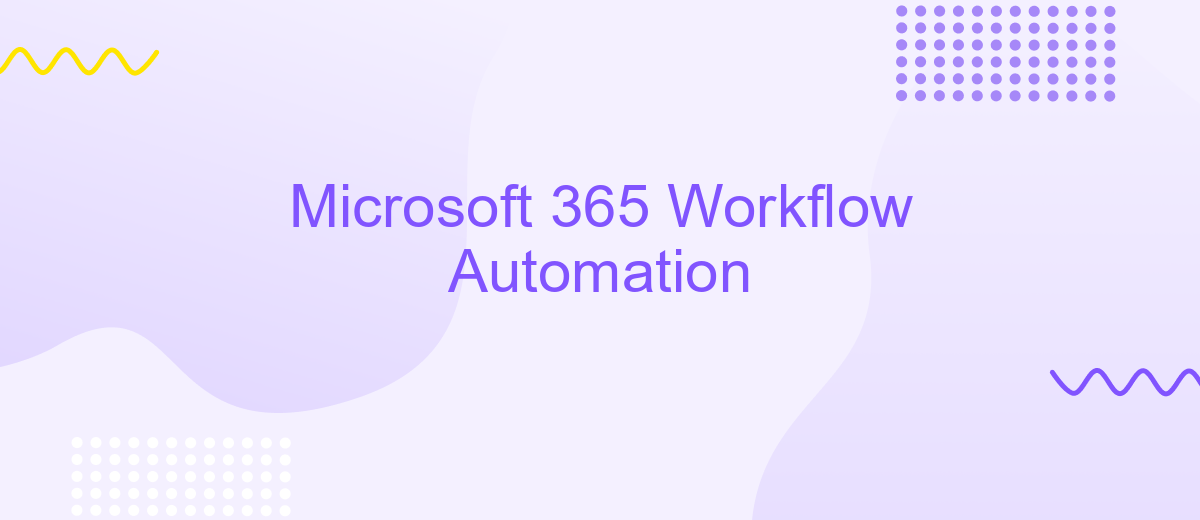Microsoft 365 Workflow Automation
In today's fast-paced business environment, Microsoft 365 Workflow Automation is revolutionizing how organizations operate. By streamlining processes and reducing manual tasks, this powerful tool enhances productivity and efficiency. From automating routine tasks to integrating complex workflows, Microsoft 365 empowers businesses to focus on strategic initiatives, ensuring they stay competitive and agile in an ever-evolving marketplace.
What is Microsoft 365 Workflow Automation?
Microsoft 365 Workflow Automation is a powerful feature that streamlines and automates routine tasks within the Microsoft 365 ecosystem. By leveraging tools like Power Automate, users can create workflows that integrate various Microsoft 365 applications, enhancing productivity and efficiency.
- Automate repetitive tasks
- Integrate multiple Microsoft 365 applications
- Enhance collaboration and communication
- Improve data consistency and accuracy
Additionally, integrating third-party services like ApiX-Drive with Microsoft 365 can further expand automation capabilities. ApiX-Drive allows seamless integration with various applications, enabling users to create complex workflows that connect Microsoft 365 with other software solutions. This ensures a more cohesive and efficient workflow environment, reducing manual effort and minimizing errors.
Benefits of Microsoft 365 Workflow Automation

Microsoft 365 Workflow Automation offers numerous benefits, enhancing productivity and efficiency across various business processes. By automating repetitive tasks, it allows employees to focus on more strategic activities, reducing the likelihood of human errors and ensuring consistency in operations. Additionally, workflow automation streamlines communication and collaboration, providing a seamless experience for team members working on shared projects, ultimately leading to better project outcomes.
Another significant advantage of Microsoft 365 Workflow Automation is its ability to integrate with various third-party applications and services. For instance, using tools like ApiX-Drive, businesses can effortlessly connect Microsoft 365 with other platforms, automating data transfer and synchronization. This integration capability not only saves time but also ensures that all systems are up-to-date, providing accurate and real-time information for decision-making. Overall, Microsoft 365 Workflow Automation, combined with robust integration tools, empowers organizations to optimize their workflows, improve efficiency, and achieve greater operational success.
How to Use Microsoft 365 Workflow Automation

Microsoft 365 Workflow Automation allows users to streamline and automate various business processes, improving efficiency and productivity. By leveraging tools like Power Automate, users can create workflows that integrate with other Microsoft 365 applications and external services.
- Identify the process you want to automate, such as email notifications, document approvals, or data synchronization.
- Access Power Automate via the Microsoft 365 dashboard and select "Create" to start a new workflow.
- Choose a template or start from scratch by selecting a trigger event, such as receiving an email or updating a SharePoint list.
- Add actions to your workflow, which can include sending emails, updating records, or integrating with third-party services like ApiX-Drive for enhanced connectivity.
- Test your workflow to ensure it functions as expected and make any necessary adjustments.
- Save and activate your workflow to start automating your process.
Using Microsoft 365 Workflow Automation, businesses can significantly reduce manual tasks and improve operational efficiency. Integrating services like ApiX-Drive can further extend the capabilities of your workflows, allowing seamless data transfer and synchronization across various platforms.
Best Practices for Microsoft 365 Workflow Automation

Effective workflow automation in Microsoft 365 requires a strategic approach to ensure efficiency and reliability. Begin by clearly defining your objectives and identifying the processes that will benefit most from automation. It's crucial to involve stakeholders early on to gather insights and secure buy-in.
Next, focus on selecting the right tools and platforms that integrate seamlessly with Microsoft 365. Utilizing a service like ApiX-Drive can streamline the integration process, allowing you to connect various applications and automate workflows without extensive coding knowledge.
- Document your workflows thoroughly to ensure clarity and consistency.
- Start small with pilot projects to test and refine your automation strategies.
- Regularly review and optimize your workflows for continuous improvement.
- Ensure compliance with security protocols and data governance policies.
Finally, provide ongoing training and support to your team to maximize the benefits of workflow automation. Encourage feedback and be prepared to make adjustments as needed. By following these best practices, you can leverage Microsoft 365 to enhance productivity and streamline operations effectively.
Examples of Microsoft 365 Workflow Automation
Microsoft 365 Workflow Automation streamlines business processes by automating repetitive tasks and integrating various applications. For instance, using Power Automate, teams can create workflows that automatically save email attachments from Outlook to SharePoint, notify team members via Teams, and update relevant data in Excel. This reduces manual effort and ensures that information is consistently updated across platforms.
Another example is integrating third-party services like ApiX-Drive to enhance workflow automation. ApiX-Drive allows businesses to connect Microsoft 365 with other software applications seamlessly. For example, a company can set up an automated workflow where new leads from a CRM system are instantly added to a SharePoint list and assigned to a sales representative in Teams. This not only improves efficiency but also ensures that critical data is shared in real-time, enhancing collaboration and decision-making.
FAQ
What is Microsoft 365 Workflow Automation?
How can I start automating workflows in Microsoft 365?
What are some common use cases for Microsoft 365 Workflow Automation?
Can I integrate third-party applications with Microsoft 365 Workflow Automation?
Is coding knowledge required to set up Microsoft 365 Workflow Automation?
Apix-Drive will help optimize business processes, save you from a lot of routine tasks and unnecessary costs for automation, attracting additional specialists. Try setting up a free test connection with ApiX-Drive and see for yourself. Now you have to think about where to invest the freed time and money!

